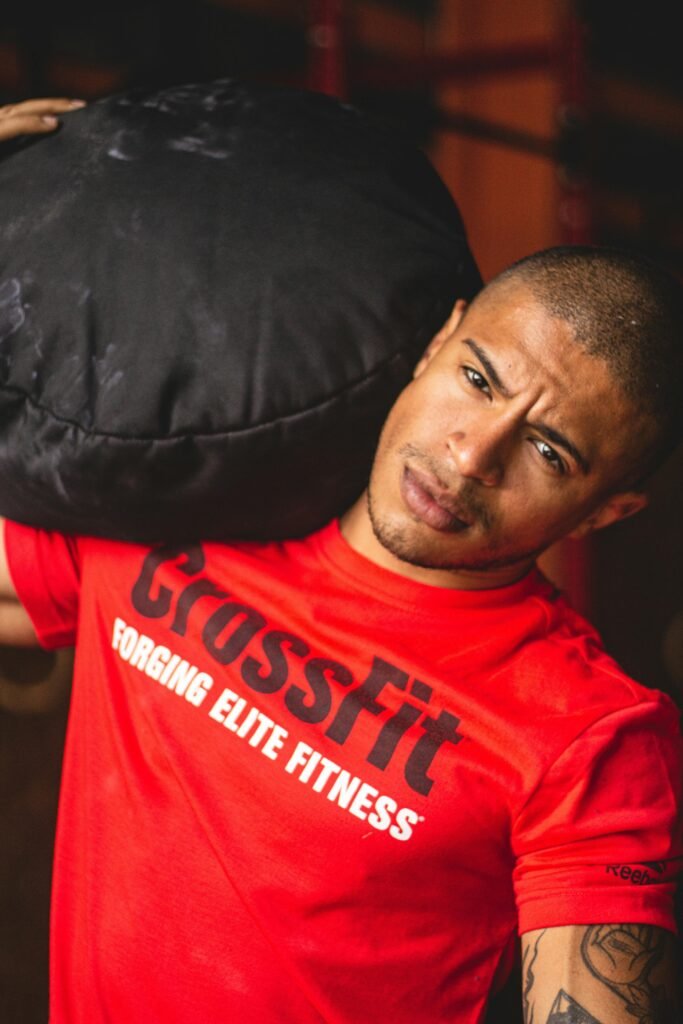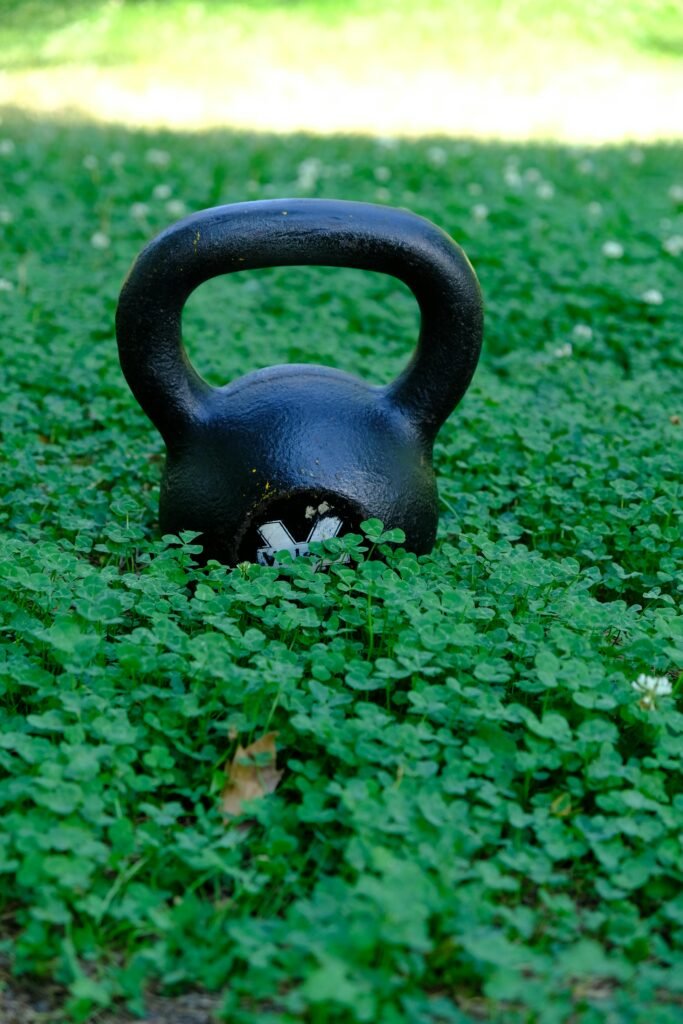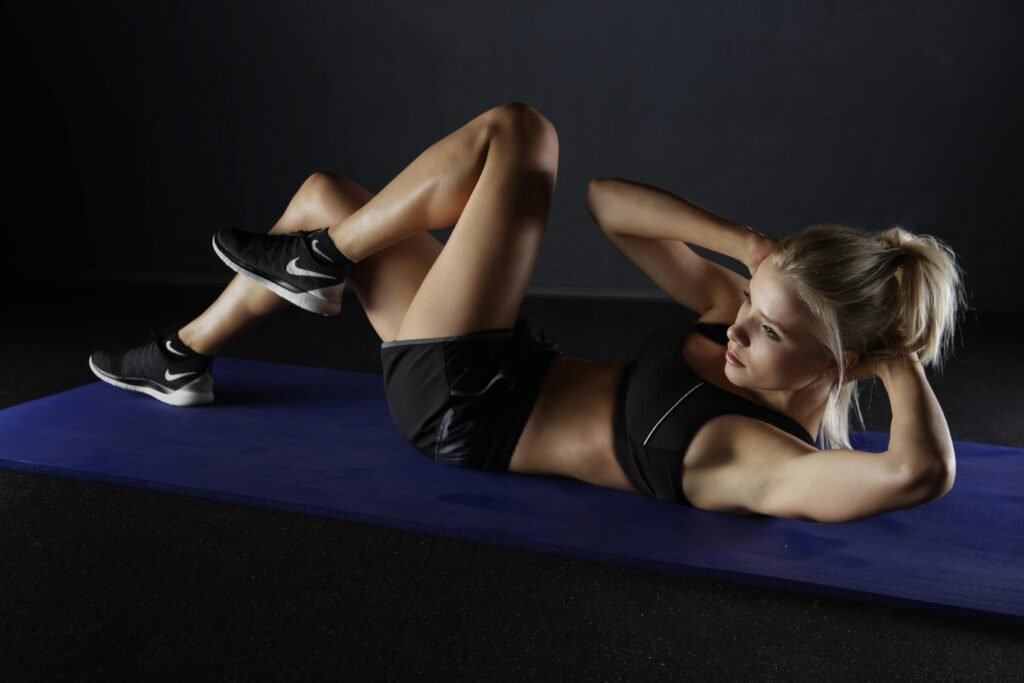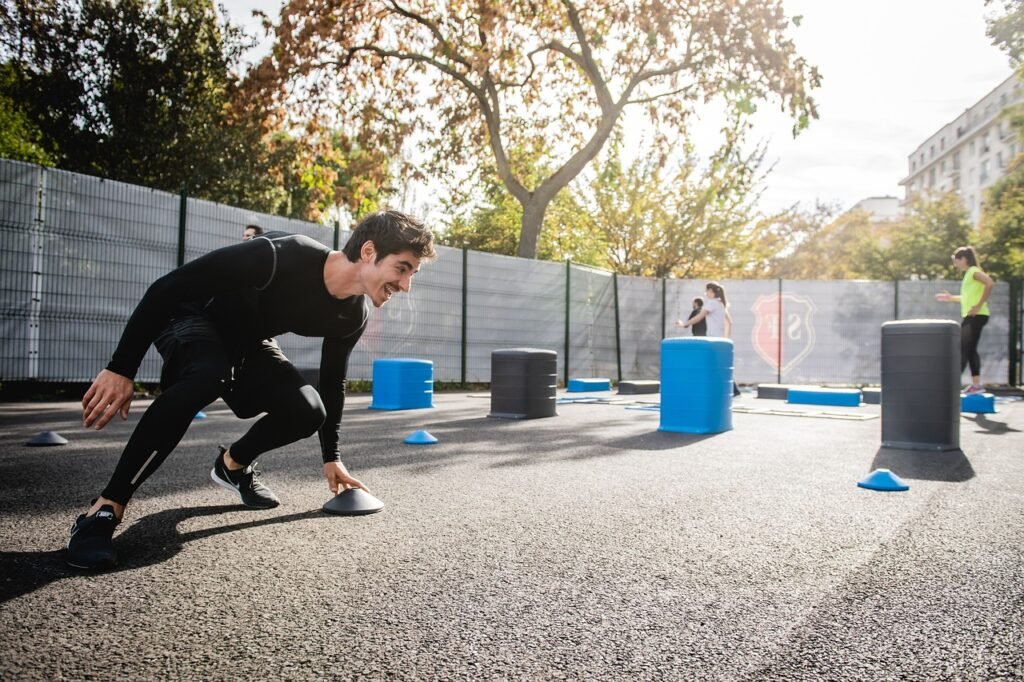
Maintaining and caring for your fitness machines is crucial to ensure their longevity and optimal performance. In this article, you will find expert advice and practical tips on routine maintenance that will help you maximize the lifespan of your fitness machines. By following these simple steps, you can keep your machines in top shape and enjoy hassle-free workouts for years to come. So, let’s get started and discover the keys to keeping your fitness equipment running smoothly.

This image is property of images.pexels.com.
Regular Cleaning
Wiping the Surfaces
Keeping the surfaces of your fitness machine clean is an essential part of regular maintenance. Sweat, dust, and other debris can accumulate on the surfaces over time, which can not only make the machine look dirty but also affect its performance. To clean the surfaces, simply dampen a soft cloth with water or a mild cleanser and gently wipe down all areas, including the handles, control panel, and seat. This will help remove any dirt or grime and keep your machine looking and functioning its best.
Cleaning the Console
The console of your fitness machine is where you control and monitor your workouts. It’s important to keep this area clean to ensure accurate readings and smooth operation. To clean the console, use a soft, lint-free cloth or a slightly damp cloth and gently wipe the surface. Be cautious not to use excessive water or cleaning agents as they can damage the delicate electronics. Remember to wipe away any sweat or fingerprints from the buttons and screen as well.
Removing Dust and Debris
Dust and debris can quickly accumulate on and around your fitness machine, especially if it’s located in a basement or garage. Regularly removing this build-up is crucial for maintaining optimal performance. Begin by unplugging the machine to prevent any electrical mishaps. Then, using a dry cloth or a soft brush, carefully wipe or brush away any dust or dirt from the surface and crevices of the machine. Don’t forget to pay attention to the areas underneath and behind the machine where dust can often accumulate. A clean machine not only looks better but also functions more efficiently.
Proper Lubrication
Identifying the Moving Parts
Proper lubrication is essential for the smooth and efficient operation of your fitness machine. Before applying any lubricant, it’s crucial to identify the moving parts that require lubrication. These can include the treadmill belt, bike chain, or elliptical tracks. Refer to your machine’s manual for specific instructions on the locations of these parts. By knowing which areas to lubricate, you can ensure that your machine operates at its best.
Selecting the Appropriate Lubricant
Choosing the right lubricant is vital to prevent damage to your fitness machine and maintain its longevity. Different machines require different types of lubricants, so it’s essential to consult your machine’s manual or manufacturer’s guidelines for recommendations. Generally, silicone-based lubricants are preferred for most fitness machines as they provide excellent lubrication and don’t attract dust or dirt. Avoid using WD-40 or other oil-based lubricants as they can cause damage or create a messy build-up.
Applying Lubrication Regularly
Once you’ve identified the moving parts and selected the appropriate lubricant, it’s time to apply the lubrication. Follow the specific instructions provided by your machine’s manual, as different machines may require different application methods. In general, apply a small amount of lubricant to the designated areas, ensuring even coverage. Be cautious not to over-lubricate, as excess lubricant can attract dust and debris. Regularly applying lubrication will help reduce friction, noise, and wear on important components, ultimately prolonging the lifespan of your fitness machine.

This image is property of images.pexels.com.
Tightening Loose Bolts and Screws
Identifying Loose Connections
Over time, the vibrations and movements associated with regular use can cause bolts and screws on your fitness machine to become loose. It’s important to identify these loose connections and address them promptly to prevent any further damage or potential accidents. Perform a thorough visual inspection of your machine, paying close attention to areas where bolts and screws are commonly found, such as the frame, seat, and handles. Look for any visible signs of looseness, such as wobbling or rattling parts.
Using the Correct Tools
Once you’ve identified loose connections, it’s critical to use the correct tools to tighten them properly. Consult your machine’s manual or manufacturer’s guidelines to determine the appropriate tools for the job. Common tools for tightening bolts and screws include wrenches, screwdrivers, or Allen keys. Using the wrong tools can lead to stripped threads or other damage. Take your time and ensure that you’re using the correct tool and applying the right amount of torque to secure the fasteners properly.
Securing Bolts and Screws Properly
After identifying the loose bolts and screws and gathering the necessary tools, it’s time to secure them properly. Start by tightening them gently, using a consistent and controlled force. Avoid overtightening, as this can damage the threads or cause parts to bind. Be sure to tighten each fastener enough to eliminate any wobbling or rattling but not so much that it distorts the parts or puts excessive stress on them. Regularly checking and tightening loose bolts and screws will help maintain the stability and integrity of your fitness machine.
Inspecting and Replacing Worn Components
Checking Cables and Wires
The cables and wires on your fitness machine are essential for transmitting signals and providing power. Regular inspection of these components can help you identify any signs of wear or damage. Look for frayed or cracked cables, loose connections, or signs of excessive bending or stress. If you notice any issues, it’s important to address them promptly to prevent malfunctions or accidents. Consider consulting a professional if you’re uncertain about the condition of the cables and wires.
Examining Belts and Chains
Belts and chains are often found in treadmills, exercise bikes, and elliptical machines. These components play a significant role in the movement of the machine, and therefore, their condition must be regularly assessed. Inspect the belts and chains for any signs of wear, such as fraying or stretching. A loose or damaged belt can impact the machine’s performance, while a worn chain can lead to uneven or jerky movements. If you notice any issues, consult your machine’s manual or seek professional assistance for guidance on replacing these components.
Replacing Damaged Parts
If you identify any worn or damaged components during your inspection, it’s important to replace them promptly. Continuing to use a machine with damaged parts can not only lead to poor performance but also pose safety risks. Consult your machine’s manual or contact the manufacturer for information on obtaining replacement parts. It’s essential to use genuine or compatible parts to ensure proper fit and functionality. When replacing parts, follow the provided instructions carefully and take the time to properly install them to maintain the integrity of your fitness machine.

This image is property of images.pexels.com.
Calibrating Sensors and Gauges
Understanding Sensor Accuracy
Sensors and gauges on your fitness machine are responsible for monitoring various aspects of your workout, such as heart rate, speed, or distance. However, over time, these sensors may become inaccurate or misaligned, affecting the reliability of the measurements. Regular calibration can help ensure that your machine provides accurate readings. Consult your machine’s manual for specific instructions on calibrating the sensors and gauges, as different machines may have different procedures.
Using Calibration Tools
To calibrate the sensors and gauges, you may need specific calibration tools. These tools are designed to help you adjust the settings and alignment of the sensors for optimal accuracy. Some machines may have built-in calibration features, while others may require external tools. Refer to your machine’s manual to determine the appropriate tools needed for calibration. If you’re unsure or uncomfortable performing the calibration yourself, it’s advisable to seek professional assistance to ensure accurate readings.
Adjusting and Fine-tuning Sensors
Once you have the necessary tools and information, follow the provided instructions to adjust and fine-tune the sensors and gauges. This typically involves making small adjustments to align the sensors correctly or recalibrating the settings to match your desired measurements. Take your time and follow the instructions precisely to ensure accurate calibration. Regularly checking and calibrating the sensors and gauges will help maintain the accuracy of your fitness machine and enhance your overall workout experience.
Maintaining Proper Tension and Resistance
Checking Tension Settings
Maintaining proper tension is crucial for optimal performance and safety on your fitness machine. Each machine may have different tension settings, such as resistance levels for a stationary bike or incline settings for a treadmill. Regularly check and adjust the tension settings according to your preferences or as recommended by the machine’s manual. A well-maintained tension system ensures that your machine provides the appropriate challenge level during your workouts and helps prevent excessive strain on the components.
Adjusting Resistance Levels
Adjusting resistance levels is particularly important for machines like stationary bikes or ellipticals, where resistance is a key factor in the workout experience. Over time, the resistance mechanisms may require adjustment to ensure they provide the desired intensity. Refer to your machine’s manual for instructions on adjusting resistance levels, as different machines may have different methods. It’s important to make gradual changes and listen to your body to ensure a safe and effective workout.
Ensuring Smooth Movement
Smooth movement is indicative of a well-maintained fitness machine. Regularly checking and fine-tuning the tension and resistance levels will help ensure that your machine operates smoothly and provides an enjoyable workout experience. If you notice any jerky movements, excessive noise, or uneven resistance, it may be a sign that the tension or resistance system requires attention. Consult your machine’s manual or contact a professional for assistance in resolving any issues.
Cleaning and Inspecting Air Filters
Locating the Air Filter
Air filters play a crucial role in maintaining the air quality and performance of certain fitness machines, such as treadmills or ellipticals with built-in fans. Locating the air filter is the first step towards proper maintenance. Consult your machine’s manual or manufacturer’s guidelines to determine the exact location of the air filter. In most cases, you’ll find the filter near the fan or ventilation area. Knowing the location will help you remove, clean, and replace the filter as needed.
Removing and Cleaning Filters
Regularly cleaning the air filter is essential for maintaining proper airflow and preventing the accumulation of dust and debris. To remove the filter, consult your machine’s manual for specific instructions, as different machines may have different filter removal methods. Once removed, use a soft brush or a vacuum cleaner on a low setting to gently remove any dust or debris from the filter. If the filter is washable, rinse it with water and allow it to dry completely before reinstalling. If the filter is disposable, replace it with a new one according to the manufacturer’s recommendations.
Replacing or Reinstalling Filters
After cleaning or replacing the air filter, it’s important to reinstall it properly. Consult your machine’s manual to ensure the filter is positioned correctly and securely. A poorly installed filter can restrict airflow or allow dust to bypass the filter altogether. Regularly inspect the air filter for signs of damage or excessive wear. If the filter is damaged, it may need to be replaced immediately to maintain the performance and lifespan of your fitness machine.
Avoiding Excessive Weight or Load
Following Weight Limits
Fitness machines have weight limits for a reason – exceeding these limits can put undue stress on the components and compromise the safety and performance of the machine. Always consult your machine’s manual to determine the recommended weight limits. Respect these limits and ensure that you, or any other users, do not exceed them. Excessive weight can lead to premature wear, increased risk of damage, or even accidents during use.
Preventing Overloading
In addition to following weight limits, it’s important to prevent overloading your fitness machine with additional weight or load. Avoid placing heavy objects, such as weights or equipment, on the machine that are not specifically designed for that purpose. Similarly, refrain from using your fitness machine for activities beyond its intended use, especially if it involves excessive weight or stress. By preventing overloading, you can help maintain the integrity and performance of your fitness machine.
Using the Machine Appropriately
Using the machine appropriately goes beyond weight limits and overloading. It’s essential to familiarize yourself with the recommended usage guidelines outlined in your machine’s manual. Pay attention to any specific instructions regarding speed, incline, or other factors that may affect the machine’s performance. Additionally, avoid any sudden or jerky movements that may put unnecessary strain on the components. By using the machine appropriately, you can ensure its longevity and enjoy a safe and efficient workout.
Regular Belt and Deck Maintenance
Cleaning the Belt and Deck
For fitness machines with a belt or deck, regular maintenance ensures smooth and efficient operation. Over time, the belt and deck can accumulate dirt, dust, and sweat, which can affect the machine’s performance. To clean the belt and deck, start by unplugging the machine for safety. Then, using a soft brush or cloth, gently remove any debris from the belt and deck surface. Avoid using excessive water or cleaning solutions, as they can damage the belt or deck. Wipe away any excess moisture and allow the belt and deck to dry completely before using the machine again.
Checking for Wear and Tear
Inspection is a crucial part of maintaining the belt and deck of your fitness machine. Regularly check for any signs of wear, such as fraying or cracking on the belt or visible damage to the deck surface. If you notice any issues, consult your machine’s manual or contact the manufacturer for guidance on addressing the wear and tear. Ignoring damaged or worn-out belts or decks can result in poor performance, reduced safety, or even the need for expensive repairs.
Adjusting Belt Tension
Proper belt tension is essential for smooth and safe operation. Over time, the belt may stretch or become loose, affecting the machine’s performance. Most fitness machines have mechanisms to adjust the belt tension. Consult your machine’s manual for specific instructions on how to adjust the tension. In general, you’ll often need to use a wrench or Allen key to tighten or loosen the tensioning screws. Take your time and follow the provided instructions carefully to ensure proper belt tension, which will enhance the lifespan and performance of your fitness machine.
Scheduling Professional Inspections and Servicing
Seeking Expert Help
While regular maintenance can significantly prolong the lifespan of your fitness machine, it’s also crucial to schedule occasional professional inspections and servicing. Experts have the knowledge and experience to identify potential issues that may go unnoticed during routine maintenance. If you’re unsure about any aspect of your machine’s maintenance or have concerns, consider seeking expert help. They can provide valuable insights, guidance, and recommendations for optimal performance and safety.
Periodic Maintenance by Professionals
Periodic maintenance performed by professionals can help ensure your fitness machine operates at its best. These maintenance visits typically involve a thorough inspection of the machine, including its components, electronics, and other crucial parts. Professionals can identify and address any hidden issues, perform necessary adjustments or repairs, and provide preventative maintenance to minimize future problems. Depending on the manufacturer’s recommendations, schedule these professional inspections at appropriate intervals to keep your fitness machine in top condition.
Addressing Potential Issues
Professional inspections are especially crucial for early detection and resolution of potential issues. Some problems, such as motor malfunctions or electronic glitches, may be beyond the scope of regular maintenance. Experts can diagnose and resolve these issues effectively, preventing further damage or expensive repairs down the line. If you notice any abnormalities or changes in your fitness machine’s performance, don’t hesitate to contact a professional to address the problem promptly. Their expertise will help ensure the longevity, safety, and efficiency of your machine.
In conclusion, routine maintenance is essential for prolonging the lifespan of your fitness machine. By following these expert tips, you can keep your machine clean, lubricated, and in proper working condition. Regularly inspecting and replacing worn components, calibrating sensors and gauges, and maintaining proper tension and resistance will ensure optimal performance and safety. Additionally, cleaning and inspecting air filters, avoiding excessive weight or load, and scheduling professional inspections and servicing will further contribute to the longevity of your fitness machine. With a little care and attention, your fitness machine can provide you with many years of enjoyable workouts.


